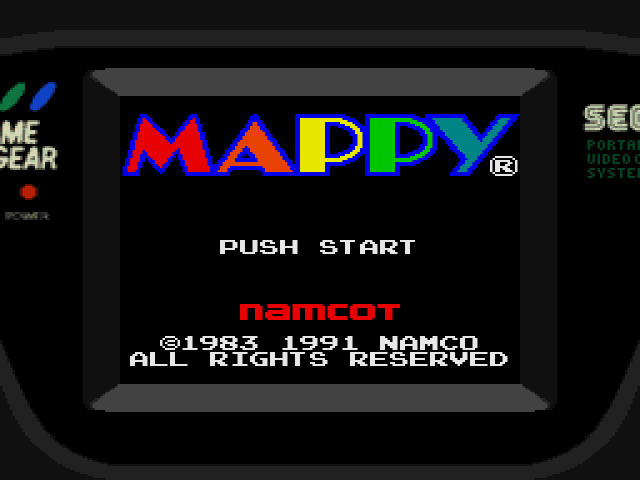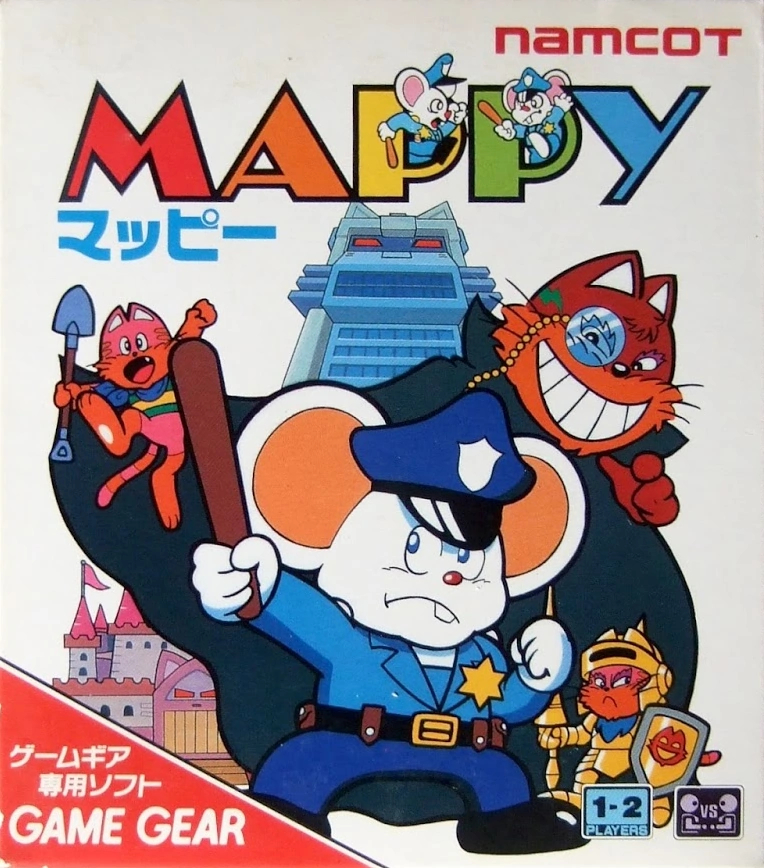
PUBLISHER: Namco
DEVELOPER: Namco (port by Nova)
RELEASE DATE: 05/24/91 – (JP)
Pity Mappy, the mouse cop who’s only doing his job. Few outside of Japan remember him, and if they do, it’s probably for his NES outing, Mappy-Land. The latter is a fun-enough time, but his 1983 arcade debut, Mappy, is one of Namco’s most charming arcade games. Cat gangs! Trampolines! Bell towers! Balloon-popping! People should have lined up around the block to bust some cat skulls with Mappy’s questionable night stick. But they didn’t, because Mappy released in 1983, a historically awful time to debut a brand new arcade title in the West.
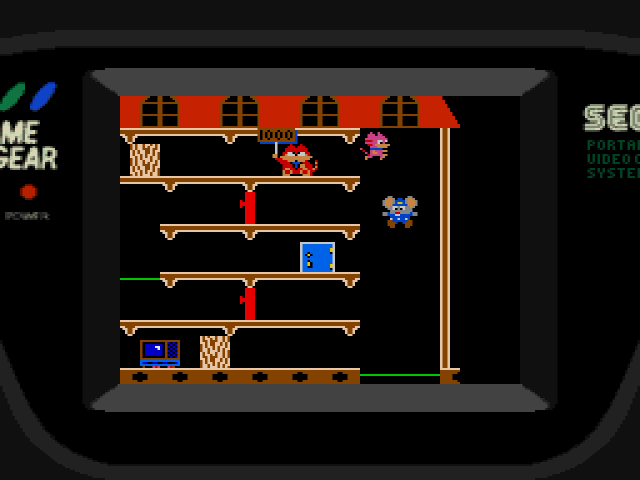
And what were arcade goers missing? In Mappy, you control the titular mouse-in-uniform as he pursues the Meowkie gang across a seemingly infinite number of levels. His job is to recover the Meowkies’ stolen loot and escape with his life and night stick intact.
This isn’t your simple neighborhood beat, though. While your main goal is to retrieve the stolen goods, your just-as-important secondary goal is to avoid touching the cats. Each level is composed of five floors (six in the arcade), with trampolines your main mode of transportation between floors. On the trampoline, Mappy is unable to get hit, but once he touches solid ground, he’s potential cat food. Since the cats are always on the hunt for Mappy, they’ll often flock directly towards your location. Mappy’s only source of attack is flashing rainbow doors that, once opened, release a frequency wave that will scoop up any cats in its path and provide you with a handsome point bonus. The cats always return, however, thanks to their nine lives and an unwavering commitment to end Mappy once and for all.
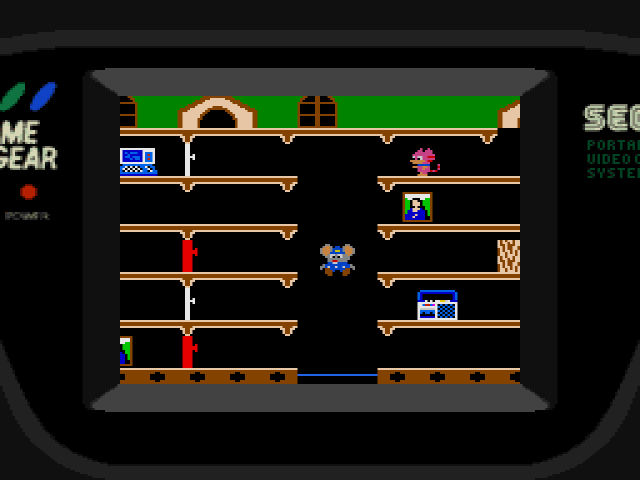
Bonus stages allow Mappy to jump on a bunch of balloons and follow his bliss for fifteen seconds or so. After each bonus stage, however, the level layouts shift slightly, adding new elements like clanging bells that fall when you touch them, killing any cats in their path.
Running from floor to floor, avoiding cats, collecting loot, opening flashing doors, bouncing on trampolines: Mappy is a joyfully surreal experience that reminds me why I play video games in the first place. Other early 80s arcade games might carry a stronger gameplay loop or visually impress with their stronger graphics, but few manage to capture the loose freewheeling spontaneity that Mappy does. Once you lock into the game’s rhythm, it’s truly hard to put down.
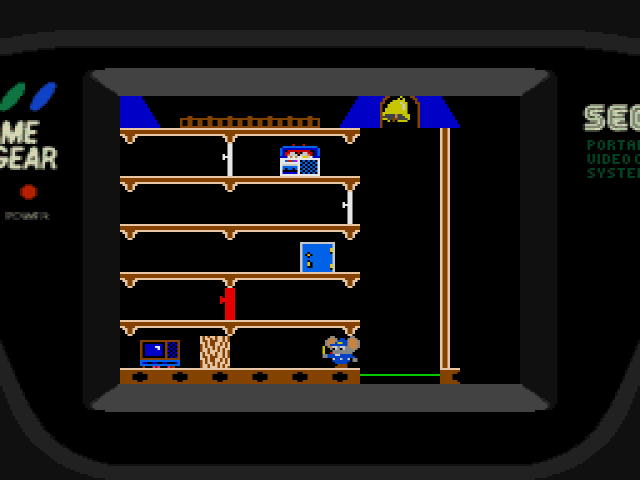
Mappy did well enough in Japanese arcades, and its solid performance was rewarded with both Japanese computer and console ports. In Western territories, however, Mappy must have sold terrible. I couldn’t find any hard data on how many arcade cabinets sold in the US or Europe, but I’m guessing “few.” No Western console/computer would receive a Mappy port until Namco Museum Vol. 2 was released for the PS1 on September 30th, 1996, thirteen years after the arcade’s release. In the 80s when nearly every arcade game received multiple home ports to maximize profits, Mappy‘s absence on any then-current Atari, Nintendo, or Sega console in the West is particularly telling.
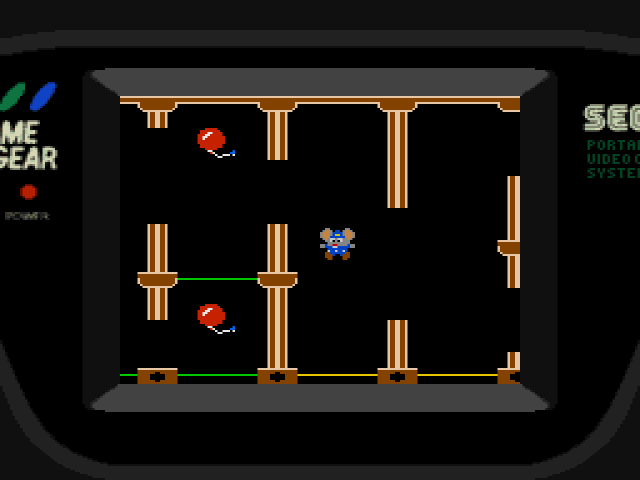
Perhaps I’m completely off base with my theory, but it does explain why Mappy‘s Game Gear port only released in Japan. Such a shame! The wonderful arcade game is recreated in full, albeit with a bit slower framerate than, say, the Famicom version. The port also contains an interesting remix option with unique-to-this-version levels and a two-player battle-mode. Compared to Pac-Man‘s bare-bones (but still technically impressive) Game Gear port, this amount of extra content from Namco is truly generous.
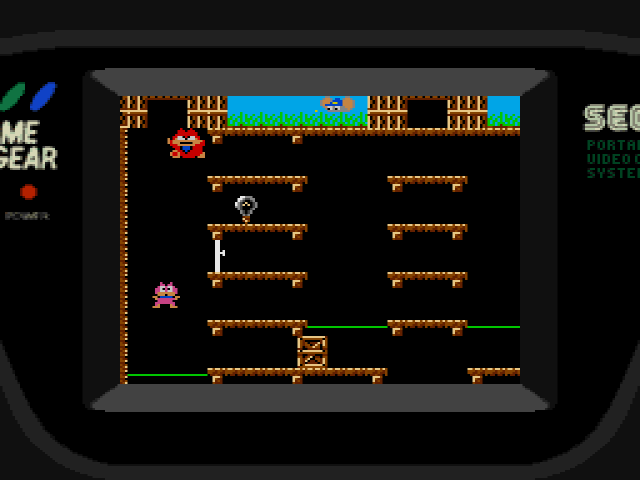
Thankfully, these days you can find Mappy on modern consoles, via Namco collections and by itself in Hamster’s arcade archives. Gamers in 1983 may have missed out, but that doesn’t mean we have to. I can’t recommend it enough.
MAPPY: A
GAME GEAR PORT: A-

